When it comes to tea, you can make the brewing process much more enjoyable by choosing the right tea bags.
Whether it be the tea leaves or the type of bag, all these aspects have a significant impact on the flavor, the aroma, and the overall experience of drinking the cup.
What are Tea Bags?
Tea bags are small pouches or sachets with porous components, mostly containing tea leaves or herbal blends for easy brewing and usage of tea.
They come in a variety of shapes, including the traditional rectangular or square and the pyramid-shaped. One of the main benefits of using them is that portion control is straightforward and they do not make a mess.
They can also be stored very easily, in contrast to loose-leaf tea. Tea bags are used all over the world owing to the fact that they are available in every tea variety, flavor, or blend available on the market.
History of Tea Bags
Tea bags have a history that goes back a thousand years in China. Tea leaves were occasionally enclosed in cloth and paper bags for convenience of use. However, these initial versions were not broadly adopted and were not available commercially.

The invention of the modern tea bag is typically attributed to the American tea merchant Thomas Sullivan in 1903.
Originally Sullivan planned his silk bags to hold his loose-leaf tea as sampling containers. But some customers made the bags into teabags, never disclosing them to him, and accidentally stewed the entire bag.
Understanding the demand side of the market, Sullivan started producing tea bags for commercial purchase. Sullivan and the tea company Tetley in the 1950s made the tea bag known on a large scale.
Tetley brought the concept of tea bags to Britain, which resulted in the huge application of tea bags in the country. This in turn caused a change in consumer behavior from non-bagging tea to tea-bagging tea.
In the 1990s, the introduction of non-degradable nylon mesh enabled the production of pyramid-shaped bags. This allowed for better water circulation and improved flavor extraction. In addition to that, the use of eco-friendly and biodegradable materials as an environmental response is a more recent phenomenon.
Before long, tea bags grew into a hit on a global scale, and tea bags became common in houses and cafes alike in different societies. Currently, tea bags are produced in numerous flavors, and blends, and with a variety of packaging, which is a way of satisfying various consumer tastes.
Composition of Tea Bag
· Filter Material
The filter material of a tea bag is one of the key determinants of the infusion process. Normally, it is made of porous material like paper, silk, or nylon that allows water to pass through while holding the tea leaves.
The kind of filter material used will impact the quality of the brew by determining how well flavors are extracted from the tea leaves.
It should be strong enough, and able to withstand the steeping process. At the same time, it will not affect the taste of the tea. Biodegradable choices are catching up with the public due to environmental issues, creating a space for eco-friendly items that the public is looking for.
· Tea Leaves
The tea leaves, which are the soul of tea bags, come from many parts of the world and are where each tea sack is concerned.
Besides, the type of tea (black, green, white, or herbal) determines the taste, smell, and health benefits of the drink. Furthermore, the characteristics of tea leaves, no less than the processing method, play a decisive role in the flavor and appearance of tea.
Better-quality leaves make the taste richer and have a more complex flavor profile; on the other hand, lower-quality leaves may yield a thinner-flavored brew. The picking, plucking, and curing of tea leaves are sophisticated steps that impact the final flavor of slurped tea.
· Additives and Flavorings
Common as well as other types of tea bags, in addition to tea leaves, may often contain additives and flavorings that are used to improve taste and aroma.
The ingredients may contain herbs, flowers, fruit seeds, or, alternatively, artificial flavorings. They make up the bold and vibrant taste that is so rich in variety to the extent of attracting all sorts of palates.
The additives and flavoring also contribute to good health outcomes by having effects such as chamomile for calming and antioxidant effects from the blackberries.
Nevertheless, the origin and nature of these additives should be taken into account since they can shape the outcome of the tea. Consumers’s demand for natural and organic product ingredients stimulates innovation in businesses.
Advantages of Tea Bags
· Convenience
They are completely hassle- and trouble-free because of how easy and quick they are to prepare. The tea bags save time and effort as they contain the tea in the exact amounts measured, making them suitable for busy people or those on the go.
Also, this reduces mess and simplifies the brewing process, making them a preferred choice for many tea lovers looking for convenience without sacrificing quality.
· Portion Control
Tea bags provide the exact amount of tea with every steeping, therefore maintaining the same flavor and strength in every cup of tea. Each tea bag has the exact amount of tea leaves in it; therefore, all the guesswork of measuring the loose tea leaves is eliminated. This uniformity helps tea drinkers achieve a consistent taste profile, whether it is a single cup of tea or a large pot of tea.
· Longer Shelf Life
With tea bags, the shelf life is generally longer due to the sealed packaging that prevents the tea leaves from getting oxidized and maintains the freshness and desired flavor. This is the reason why tea bags have a longer shelf life. Tea bags remain in top condition for a long enough time to enable consumers to store their preferred picks without losing their fragrance. In addition, it safeguards the tea from getting corroded, which enhances long-term storage.
· Reduced Mess
Tea bags make a fuss-free brew, minimizing the cleanup and avoiding a complicated tea-making process. Unlike woven tea, which requires an additional infuser or strainer to brew, tea bags entrap the leaves within a porous filter material. This prevents them from escaping and leaving behind tea residue.
This elimination of overlap simplifies the brewing process and removes an entire set of utensils, leaving the kitchen. The mess-less brew way of tea bags is the preferable option, especially for those who want a hassle-free and quick way of enjoying their favorite tea varieties.
Tea Bag Manufacturing Process
1. Harvesting and Processing of Tea Leaves
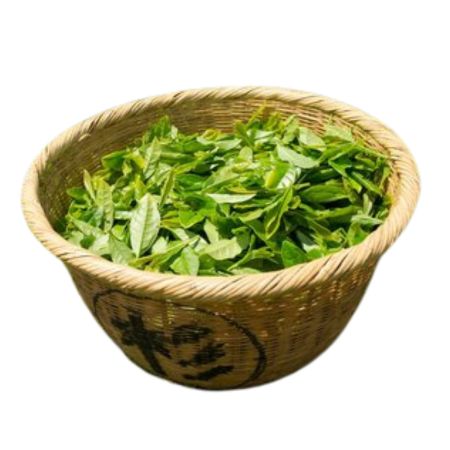
The gathering of tea bags starts with the conscious selection of tea leaves from chosen regions all over the globe. This process is done by professional workers who carefully harvest the tea leaves at the best time for extra taste.
Harvested leaves are processed, and some leaves may be further processed by withering, rolling, oxidation, and drying. The attention to details and the accuracy during those processes have a big impact on the final flavor and the aroma of the closed tea bags.
2. Fabrication of the Teabag Filter
The filter material is a key element due to the fact that it will influence the filtering efficiency during the brewing process. There are some types of this material, such as paper, silk, or nylon.
However, they go through manufacturing processes like weaving, perforation, or heat-sealing to form porous yet strong structures.
The material selected will determine factors such as biodegradability, heat resistance, and overall quality. This will ultimately determine the overall performance of the finished tea products.
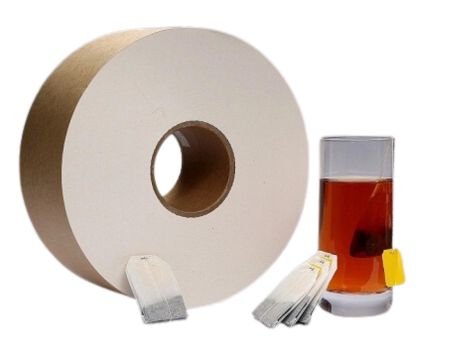
3. Filling Process
The filling step also involves precision weighing and sifting of the tea leaves in the filter base. At this stage, exactitude is needed so batches are uniform and flavor profiles are consistent.
The quality and location of tea leaves in relation to the amount and quality of the brewed tea determine its richness. Filling is usually done manually or in a machine-driven way. Maintenance of quality and standards is also observed at this stage.

4. Sealing
Sealing is a primary step that helps maintain the freshness and integrity of tea. The bags are sealed to keep the leaves fully covered, thus providing protection from outside elements that could affect the quality of the tea.
Sealed-in methods include heat-sealing or adhesive sealing, which are picked for their ability to create an adequate moisture and airproof barrier.
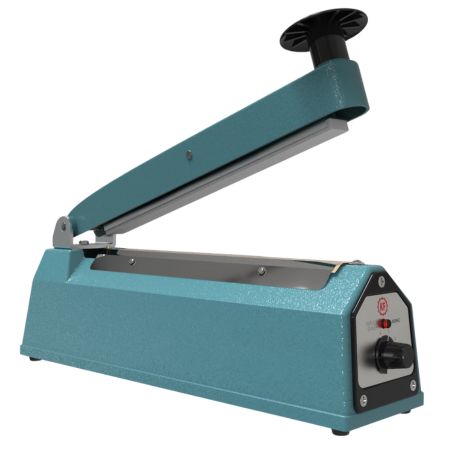
5. Packaging
The final phase is to package the sealed teabags into retail boxes for sale. Extra shielding is provided by each item’s individual packaging, keeping the items fresh until the moment they are used.
Bundle packaging is also a widespread choice for mechanization. Packaging can come with such details as tea classification, brewing instructions, and brand details.

The current technological trends in packaging refer to the sustainability aspect, with a major focus on biodegradable materials and simple designs.
Packaging has the vital function of showing the product in an attractive way for customers. It is a safety precaution for the product while it is on the shelf to be consumed.
Types of Tea Bags
Traditional Tea Bags: Rectangular or Square Shape

As opposed to the latter, conventional tea bags still involve the production of tea packaging in a rectangular or square form.
These come in filter paper shapes. On three sides, they have an open pathway with an entry at the top. They can be sealed and used as a means of storing the tea inside.
The reason for their immense popularity is their convenience, affordability, and simplicity of production. Their effect may be constrained by limiting the tea leaf expansion, but improvements in technology and materials have shown recent success in increasing their efficiency.
Pyramid-Shaped Tea Bags
The pyramid tea bags that are a modern invention are actually in place to overcome the pitfalls of traditional tea bags.
They have a special, large pyramid shape that provides a great amount of space for tea leaves to unfold and fully penetrate.
Unlike their fixed-shape counterparts, these bags are woven from nylon or biodegradable mesh to give them soft, rounded shapes and increased water circulation.
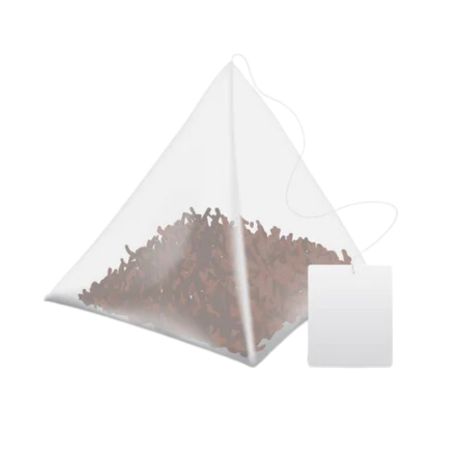
The pyramid shape of this infuser uses up its full capacity; thus, any type of whole-leaf tea and larger botanical ingredients will always be well displayed.
The trend in triangular bags has been accepted for their awesome skill in delivering superior brewing experiences and is usually related to high-quality tea blends.
Round or Circular Tea Bags
Another type of tea bag, which is round or circular, represents a different perspective on the visual aspect as well as usage characteristics. Often, these bags may be manufactured from filter paper or materials of a similar nature and stored in a spheroid shape. Unlike rectangular or pyramid-shaped bags, they still have sufficient space for tea leaves to be expanded during brewing.
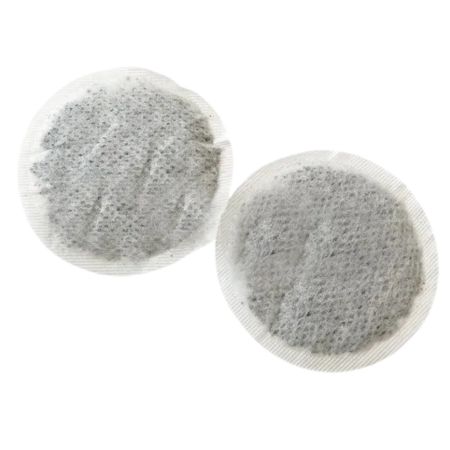
Round tea bags are preferred due to the small size they have, which makes it easier to serve single containers and travelers.
They are also available in several styles and can now have the latest technologies built in, such as stingless labels or materials that can be biodegraded.
Brewing and Usage
Steeping Instructions
The steeping instructions give directions on how to prepare the perfect cup of tea through the use of tea bags.
Factors like temperature of water, steep time, and stirring cause a change in the cup’s flavor, aroma, and strength. The instructions for brewing specific tea types as well as personal preferences are variable.
As an example, sensitive green teas may need lower temperatures and shorter steeping times, while potent black teas may benefit from hotter water and longer infusion periods.
Clear and straightforward stead instructions help customers reach the required flavor profile and enjoy the best of the tea by the selected method.
Tea Bag Disposal and Environmental Impact
The correct methods of discarding used tea bags are of crucial importance for the simple reason of minimizing the environmental footprint.
While many tea bags are biodegradable, some of them may have components that cannot decompose easily, such as nylon or staples.
Consumers are requested to either compost tea bags that are biodegradable or put them into composting bins as a way of reducing waste generated in landfills.
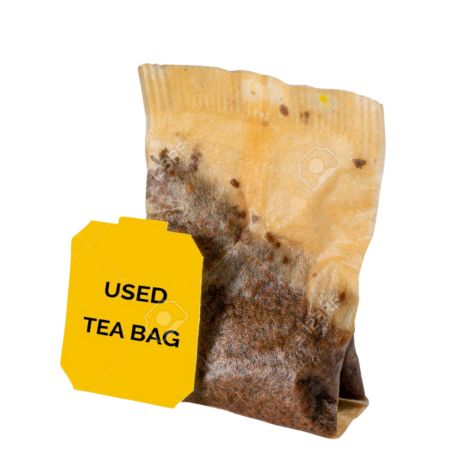
If that is not enough, the commercialization of completely biodegradable and eco-friendly tea bag materials is in progress to solve the environmental issue.
Education related to ethical disposal practices and the usage of eco-friendly packaging helps to minimize the negative environmental impact of tea bag use.
Role of Tea Bags in Tea-drinking Cultures
Convenience and Accessibility
The tea bags provide unmatched convenience, making it possible for individuals to quickly enjoy a cup of tea without requiring complicated preparation.
This is eased by wide availability, which has in turn democratized tea consumption. Thus making it available to those with busy schedules or a lack of limited access to traditional tea-making equipment.
Adaptation to Modern Lifestyles
In the present era, which is very hectic and time is usually scarce, tea bags offer a handy option for “drink on the go” consumption.
Whether in the home, office or on the go, tea bags provide individuals with the pleasure of a comforting cup of tea with minimum effort, adapting well to busy modern lifestyles.
Preservation of Tradition
Though the tea bags were a modern innovation, they also helped in the continuation of the tradition of tea drinking.
In cultures where tea rituals are deeply rooted, such as the Japanese tea ceremony or the English afternoon tea, tea bags provide a convenient choice for everyday use while still being respectful of the cultural importance of tea.
Expansion of Tea Culture
The growing popularity of tea bags has led to bringing people from different backgrounds together to enjoy a cup of tea.
Tea bags have witnessed the highest demand since they are easy to transport as well as store. This led to their popularity among travelers, expatriates, and individuals who live in regions where accessing loose-leaf tea could be a challenge.
Innovation and Diversity
Tea bags have inspired novelty in the tea industry, which has brought about the invention of diverse variants of tea, tastes, and packages.
The tea bag varieties go beyond the black and green leaves and embrace herbal infusions and exotic blends, offering a tasteful experience throughout.
Guidelines for selecting the best tea bags
Tea Quality
Find tea bags that contain the finest quality tea leaves coming from a beneficial tea garden or a region highly regarded for exceptional teas.
Look for the packaging or product description for information on the tea origin and grade at the back of the package.
Packaging
While choosing, go for the teabags that are individually packed or come in sealed packaging to maintain freshness and aroma. Protective packaging that protects the tea bags from moisture, light, and air makes sure the tea remains in its original quality.
Filter Material
Please take into account the filtration material used, if it is tea bags. Instead of plastic, search for bags made of decomposable and environmentally friendly materials, such as unbleached paper or compostable plant-based fibers, to minimize the ecosystem effect.
Flavors and Additives
If you are in need of flavored teas or herbal infusions, tea bags containing only natural flavors and good-quality ingredients are the best choice.
Artificial additives and excessive flavorings should be absolutely avoided in tea, as they may spoil the taste and quality.
Price and Value
Look at the cost per bag to compare the quality and value against the price. Even though premiun teas are expensive, they offer an exceptional taste for tea enthusiasts; thus, the price is justified.
Conclusion
Compare the brands, read the reviews, and trust your nose to weed out the tea bags that do not satisfy your tastes and values. With the knowledge and guidelines obtained from this guide, you should be able to take your tea experience to a higher level. Enjoy a perfectly brewed cup of tea as nothing else but a simple pleasure.
More resources:
Making Tea with Tea Bags – Source: JOCHAMP
What are Tea Bags Made of – Source: JOCHAMP
How to Steep Tea Bags – Source; JOCHAMP
Tea Bag – Source: WIKIPEDIA
Ways to Make Tea Bag – Source: JOCHAMP


